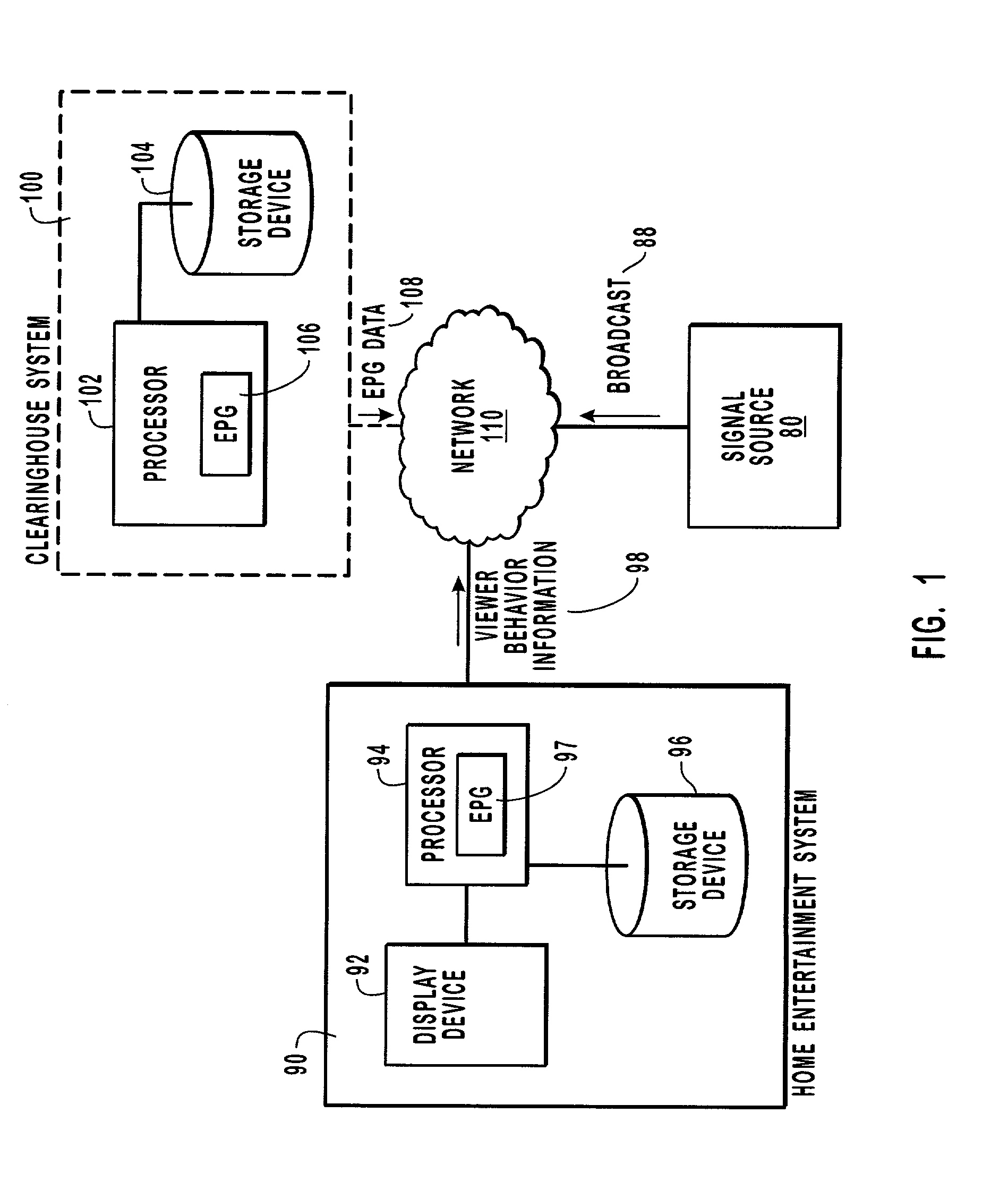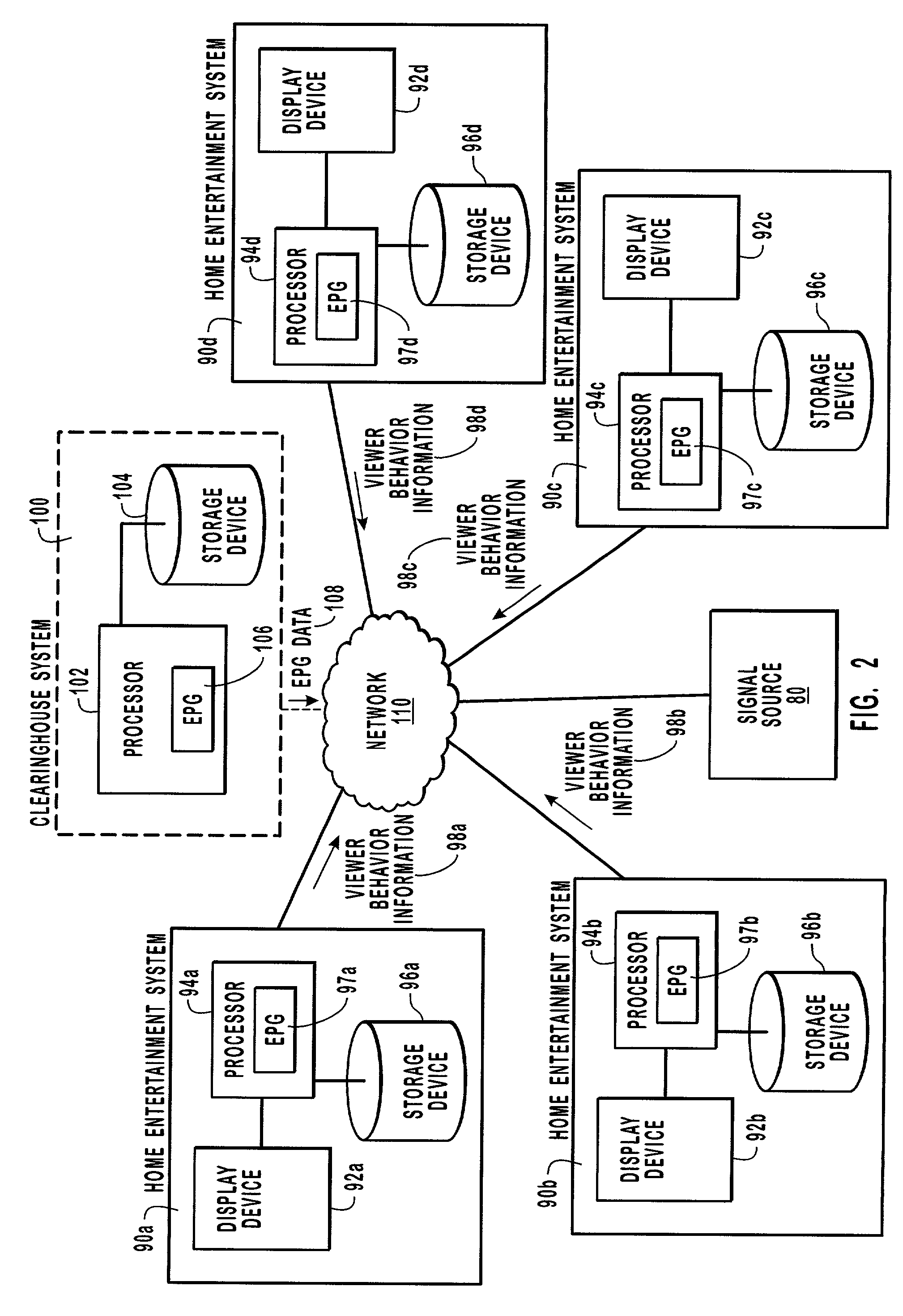Modifying an electronic program guide based on viewer statistics
a technology of viewer statistics and electronic program guides, applied in the field of viewer statistics modification of electronic program guides, can solve the problems of time-consuming practice, no reliable way of knowing, limited conventional electronic program guides and other directories, etc., and achieve the effect of convenient identification of information
- Summary
- Abstract
- Description
- Claims
- Application Information
AI Technical Summary
Benefits of technology
Problems solved by technology
Method used
Image
Examples
Embodiment Construction
[0021]The present invention relates to systems and methods for utilizing a back channel as a feedback system to reveal what television viewers are watching at a given moment. As the viewing behavior statistics are gathered in real time, the EPGs displayed to viewers can be modified to indicate which of the currently-broadcasted programs are the most popular. The EPG can be modified in any of a various ways that communicate to viewers the absolute or relative number of other viewers who are watching the television programs corresponding to the EPG listings.
[0022]As under herein, unless otherwise specified, the term “number of viewers” when used to describe the viewing behavior or viewer activity associated with television programs, extends to absolute numbers of viewers, relative numbers of viewers, percentage of the viewing public, or any other metric that can indicate a degree to which a television program is being viewed, and is not limited to an absolute number of viewers. The “v...
PUM
 Login to View More
Login to View More Abstract
Description
Claims
Application Information
 Login to View More
Login to View More - R&D
- Intellectual Property
- Life Sciences
- Materials
- Tech Scout
- Unparalleled Data Quality
- Higher Quality Content
- 60% Fewer Hallucinations
Browse by: Latest US Patents, China's latest patents, Technical Efficacy Thesaurus, Application Domain, Technology Topic, Popular Technical Reports.
© 2025 PatSnap. All rights reserved.Legal|Privacy policy|Modern Slavery Act Transparency Statement|Sitemap|About US| Contact US: help@patsnap.com



